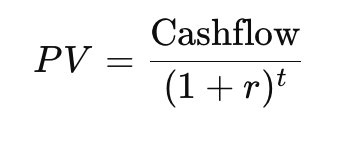Introduction into Accounting: Terminology & Equations
Term | Definition |
Budget | A financial or quantitative plan of activity for a future period that has been authorised for implementation. |
Cashflow | The movement of money into and out of a business over a specific period. |
Net Present Value (NPV) | The difference between the present value of cash inflows and outflows used to assess the profitability of an investment. |
Payback Period | The length of time required to recover the initial investment in a project. |
Working Capital | The difference between current assets and current liabilities, measuring short-term financial health. |
Operating Gearing | The proportion of fixed and variable costs in a business affecting risk and profitability. |
Break-even Point | The sales volume at which total revenue equals total costs results in zero profit. |
Statement of Financial Position | A financial statement that reports a company’s financial position at a given time, showing assets, liabilities, and equity. |
Depreciation | The allocation of the cost of an asset over its useful life. |
Contribution | The difference between sales revenue and variable costs is used to cover fixed costs and generate profit. |
Cost of Capital | Calculates the overall cost of financing using debt and equity proportions. |
Acid Test Ratio | Measures liquidity by comparing quick assets to short-term liabilities. |
Return on Capital Employed (ROCE) | Assesses the efficiency of capital investment in generating profits. |
Net Profit = Total Revenue - Total Expenses
Margin % = (Net Profit / Revenue) × 100
Return on Investment (ROI) = (Net Profit / Investment) × 100
Annual Growth % = [(New Revenue - Old Revenue) / Old Revenue] × 100
gross margin
Equation Name | Formula |
Present Value |  |
Net Present Value (NPV) |  |
Payback Period |  |
Working Capital |  |
Operating Gearing |  |
Break-even Point |  |
Contribution |  |
Cost of Capital |  |
Acid Test Ratio |  |
Return on Capital Employed (ROCE) |  |